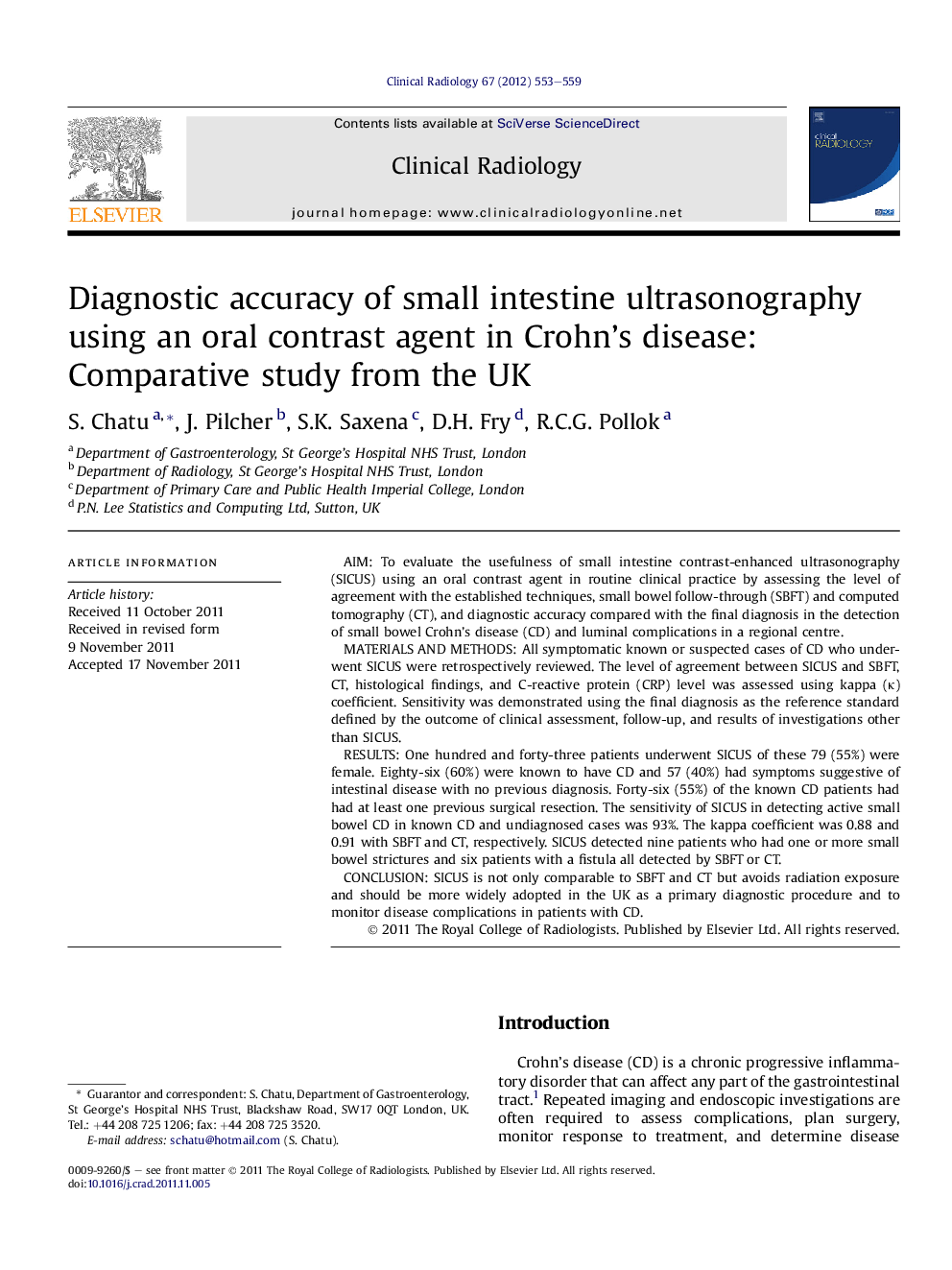| Article ID | Journal | Published Year | Pages | File Type |
|---|---|---|---|---|
| 3983334 | Clinical Radiology | 2012 | 7 Pages |
AimTo evaluate the usefulness of small intestine contrast-enhanced ultrasonography (SICUS) using an oral contrast agent in routine clinical practice by assessing the level of agreement with the established techniques, small bowel follow-through (SBFT) and computed tomography (CT), and diagnostic accuracy compared with the final diagnosis in the detection of small bowel Crohn’s disease (CD) and luminal complications in a regional centre.Materials and methodsAll symptomatic known or suspected cases of CD who underwent SICUS were retrospectively reviewed. The level of agreement between SICUS and SBFT, CT, histological findings, and C-reactive protein (CRP) level was assessed using kappa (κ) coefficient. Sensitivity was demonstrated using the final diagnosis as the reference standard defined by the outcome of clinical assessment, follow-up, and results of investigations other than SICUS.ResultsOne hundred and forty-three patients underwent SICUS of these 79 (55%) were female. Eighty-six (60%) were known to have CD and 57 (40%) had symptoms suggestive of intestinal disease with no previous diagnosis. Forty-six (55%) of the known CD patients had had at least one previous surgical resection. The sensitivity of SICUS in detecting active small bowel CD in known CD and undiagnosed cases was 93%. The kappa coefficient was 0.88 and 0.91 with SBFT and CT, respectively. SICUS detected nine patients who had one or more small bowel strictures and six patients with a fistula all detected by SBFT or CT.ConclusionSICUS is not only comparable to SBFT and CT but avoids radiation exposure and should be more widely adopted in the UK as a primary diagnostic procedure and to monitor disease complications in patients with CD.
